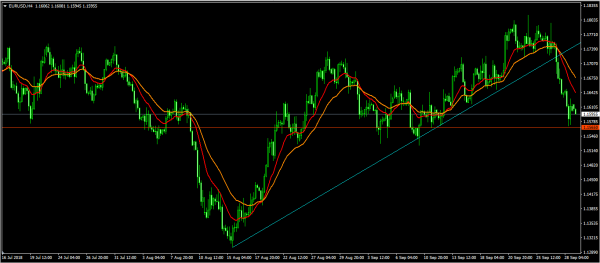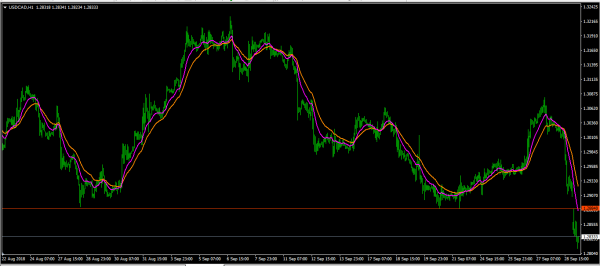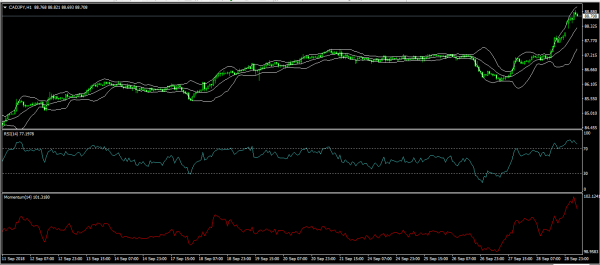The effects of the current trade conflict between the US and China have started to emerge. Yesterday, the manufacturing Purchasing Managers Index from China’s Logistics Information Center and Caixin showed a reduction in activity. The former showed that the PMI in September was at 50.8, which was lower than the expected 51.2. The latter showed the PMI at 50, which was lower than the expected 50.5. A PMI level above 50 is considered healthy. The decline in the PMIs sent shockwaves to the Chinese stocks that opened the markets lower from Friday’s close.
The Canadian dollar rose sharply against the US dollar after Reuters reported that the US had reached a deal with Canada on a new trade deal. The new deal will open up the Canadian dairy market to the US and exempt Canada’s auto sector from auto tariffs. The new deal will also change the name from NAFTA to the US, Mexico, Canada Agreement. Previously, Trump had said that Canada’s exports to the US would face major tariffs if a deal was not reached by midnight on Sunday.
The Japanese Yen declined in the Asian session after mixed economic numbers from Japan. The Tankan all big industry CAPEX for the third quarter rose by 13.4% which was lower than the expected 14.2%. The Tankan Larger Manufacturers Index for the third quarter rose by 19, which was lower than the expected 22 while the non-manufacturer’s index fell to 22. This data is a clear indication of the challenges the Japanese economy is facing in the midst of a global trade war.
EUR/USD
The EUR/USD pair was little moved in the Asian session as the previous sharp decline paused at around 1.1594. The current price is below the important support line shown below. It is also below the 14 and 28-day exponential moving average. It will likely continue the downward movement today. This will depend on the PMI data from Germany and the United States. Further declines will see it test the 1.1525 level while any upside will see it test the 1.1645 level
USD/CAD
The USD/CAD fell sharply after indications that the US had reached a deal with Canada. This ended weeks of tensions between the two countries. The pair reached an intraday low of 1.2810, which was below the important support. This was an extreme low, and is obviously below all the major moving averages. There is a likelihood that the pair will continue to move downwards as traders expect the BOC to start thinking of a rate hike. This is because the US-Canada trade relationship was a major factor in determining the future of the hikes.
CAD/JPY
The CAD/JPY pair continued the sharp ascent started in early September. It reached an intraday high of 88.9 in the Asian session as traders cheered the US-Canada deal. The pair is trading along the upper Bollinger Band which is an important show of strength. The RSI is above the 70 overbought level while the momentum indicator is above 100. While a slight downward movement is likely in the short-term, the pair will most likely continue the upward momentum.















